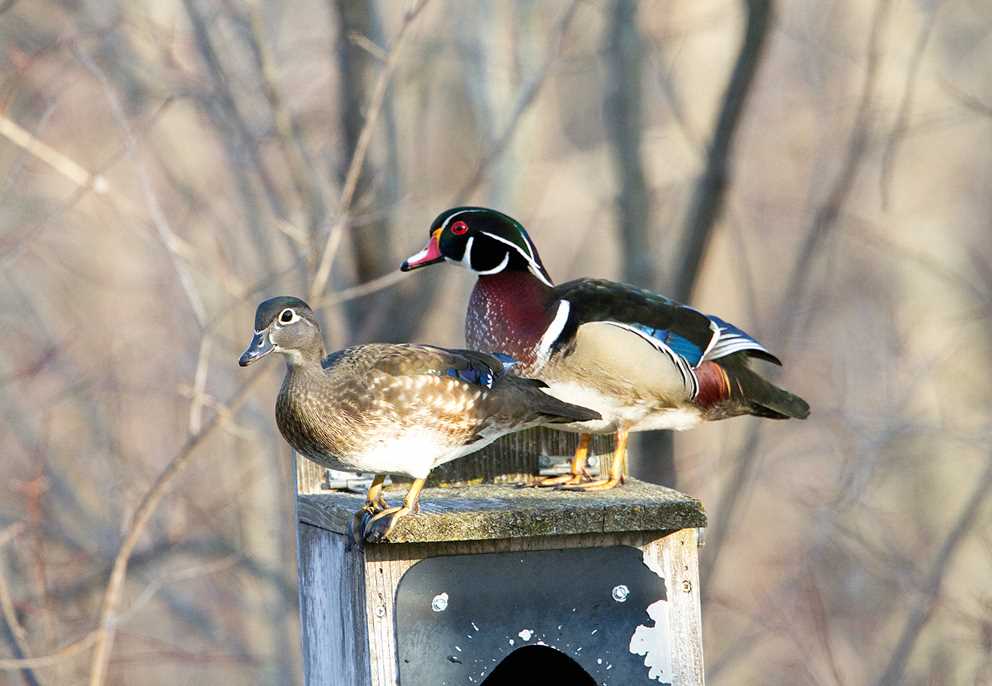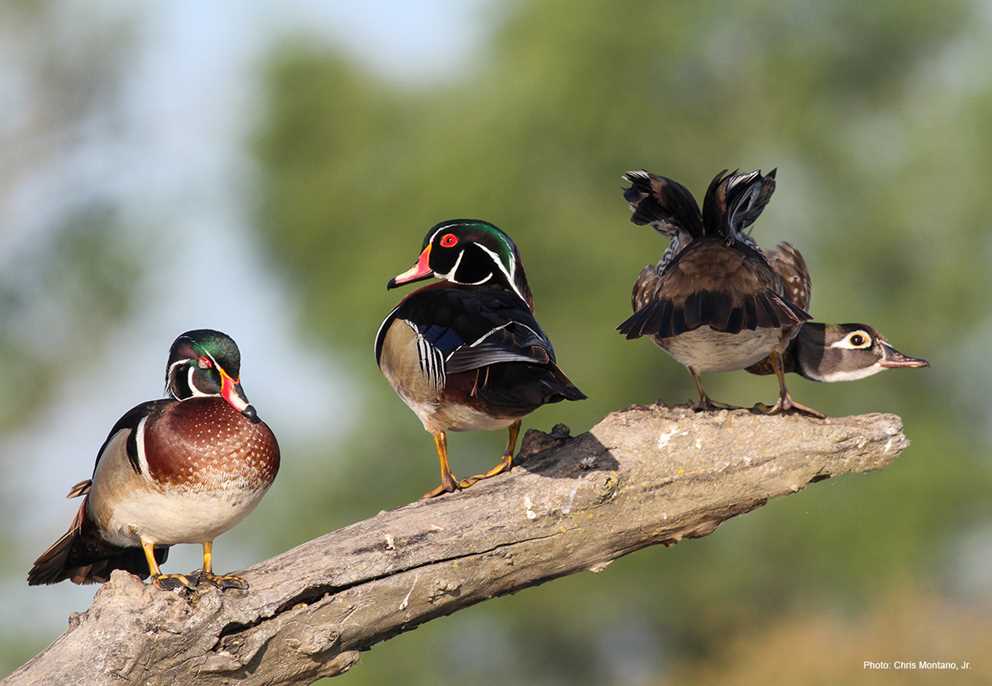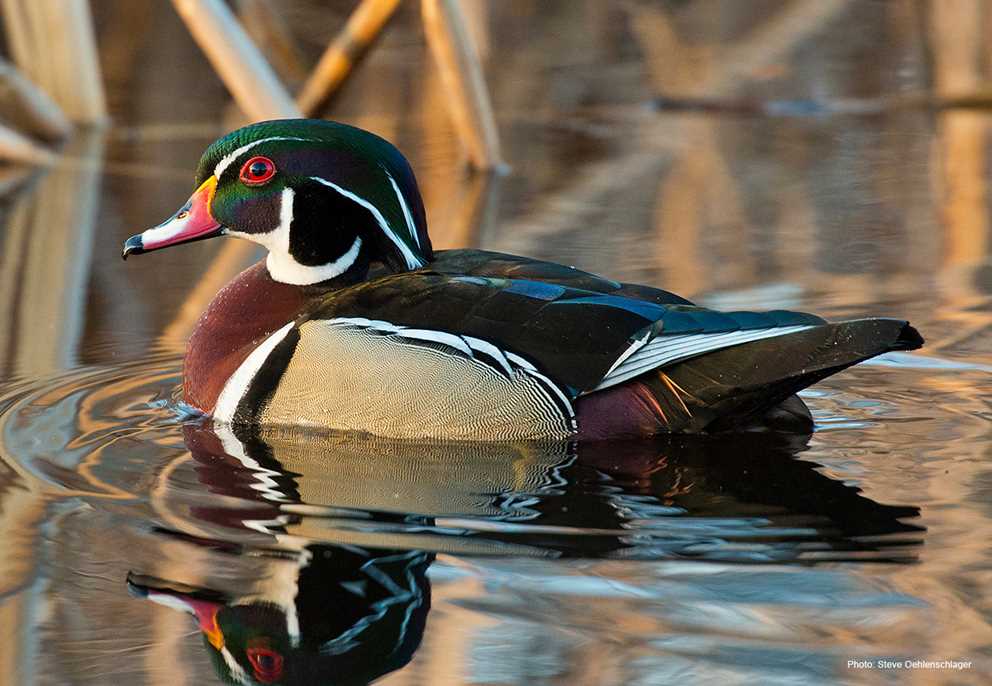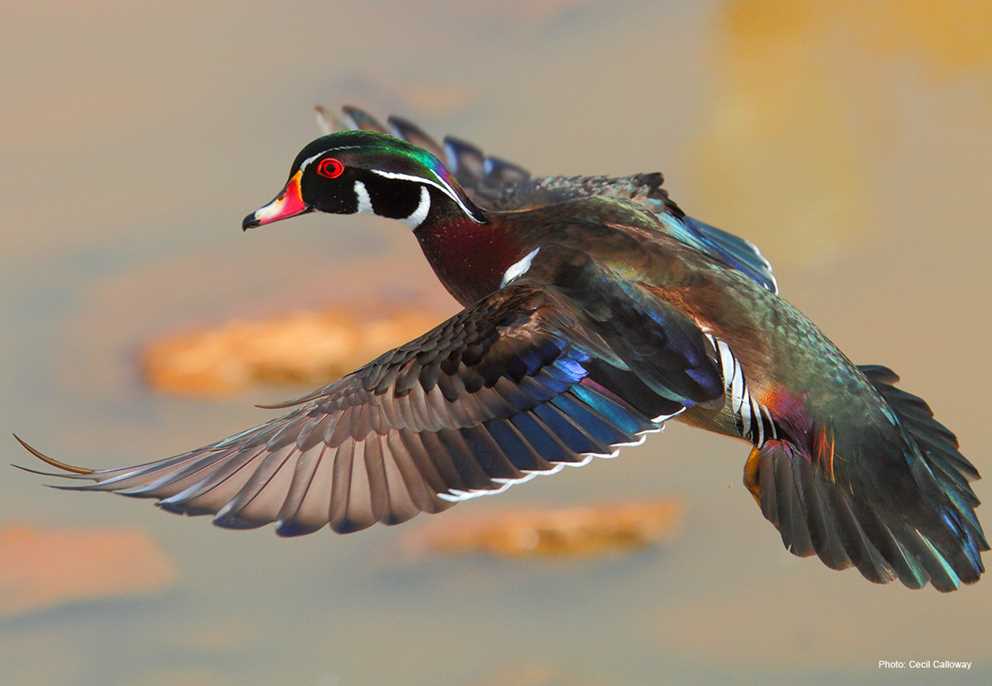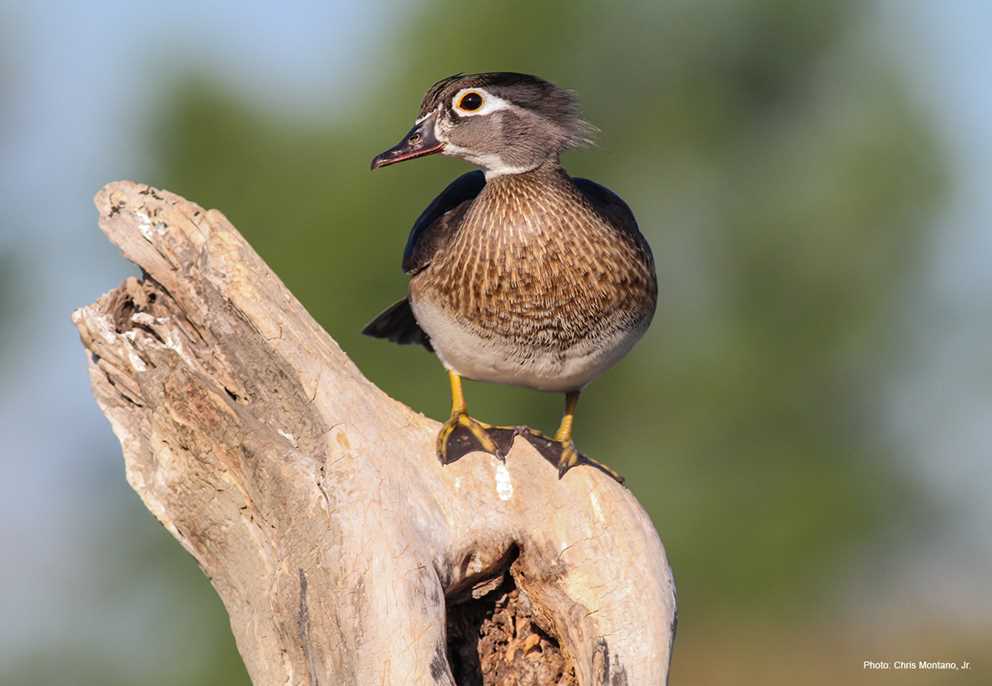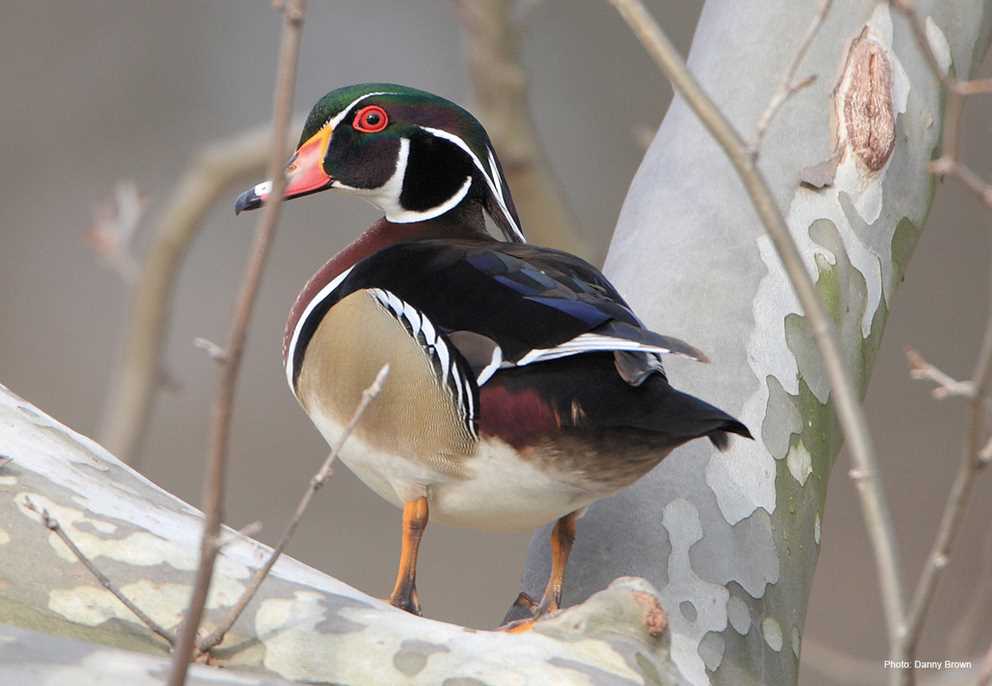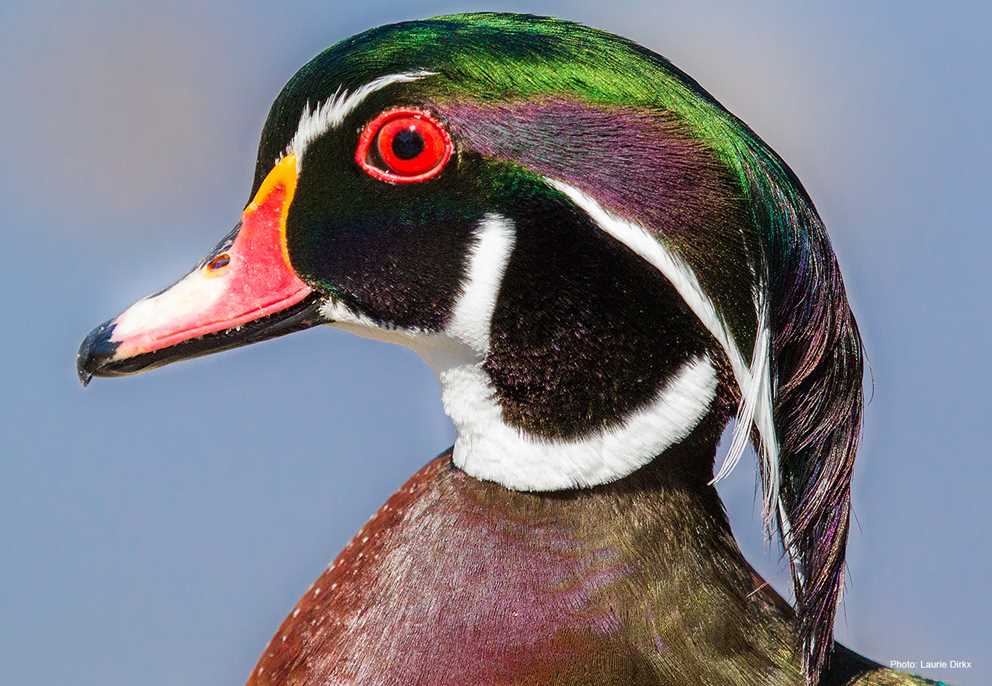Breeding
Wood ducks breed across most of the central and eastern United States, southeastern Canada and along the Pacific coast from California to British Columbia. The highest breeding densities occur in the Mississippi Alluvial Valley. In recent decades, the breeding range has expanded westward into the Great Plains region following development of wooded riparian corridors. Wood ducks prefer riparian habitats, wooded swamps and freshwater marshes. Females nest in tree cavities or nest boxes and lay an average of 12 bone-white eggs.
Latin: Aix sponsa
Average length: M 20", F 19"
Average weight: M 1.5 lbs., F 1.4 lbs.
Description
Male wood ducks have a crested head that is iridescent green and purple with a white stripe leading from the eye to the end of the crest, and another narrower white stripe from the base of the bill to the tip of the crest. The throat is white and the chest is burgundy with white flecks, gradually grading into a white belly. The bill is brightly patterned black, white and red. The legs and feet are a dull straw yellow and the iris is red. Female wood ducks have a gray-brown head and neck with a brownish, green, glossed crest. A white teardrop shaped patch surrounds the brownish-black eye. The throat is white and the breast is gray-brown stippled with white, fading into the white belly. The back is olive brown with a shimmer of iridescent green. The bill is blue-gray and the legs and feet are dull grayish-yellow.
Food Habits
Wood ducks have a variable diet, consuming both plant and animal foods. They eat terrestrial and aquatic invertebrates, seeds, and fruits, especially acorns.
Population
Reliable estimates of wood duck populations do not exist due to the difficulty of surveying birds in forested habitat, though data from the Breeding Bird Survey (1966-1994) and Christmas Bird Count (1959-1988) indicate increasing populations in nearly all regions of North America.
Migration and Wintering
In the eastern and western United States, 30-75 percent of wood ducks are permanent residents. Migratory wood ducks use the Atlantic Flyway from New Brunswick to Georgia and south to eastern Texas and the West Indies. The western migratory birds use the Pacific Flyway from British Columbia to the Central Valley of California. Both populations winter over southern portions of their respective breeding ranges, with small numbers south to central Mexico. No clearly defined migratory path exists for interior birds, though they seem to converge south of Kentucky along the Mississippi River floodplain. Generally, wintering habitat differs little from habitats used at other times of the year. Wood ducks predominantly use forested wetlands with a variety of hardwood tree species. Wood ducks are resident in Cuba and are scarce winter visitors to Mexico and Bermuda. They occasionally winter in the Cayman Islands (Scott and Carbonell, 1986).

